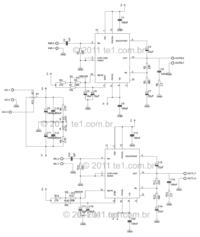Enzy
Advanced Member level 1

- Joined
- Mar 20, 2016
- Messages
- 488
- Helped
- 2
- Reputation
- 4
- Reaction score
- 2
- Trophy points
- 18
- Activity points
- 4,607
I build amplifiers as my hobby when I come in from work I am yet to build good high power amplifiers but what seems to e worst is that I can never build good amplifiers they always hum or hist or if not they always make the amplifier that its connected to lower, If its not lower then it never increases the volume so I am always trying out new circuit I want to know how does this circuit look to you guys, the plan would be to use it to increase the volume then use a tone control circuit otherwise to control bass, mid and tweeter.

want to add it to this circuit


want to add it to this circuit



